Indiana’s statewide ambient air quality monitoring network is made up of different types of monitors that collect data on pollutant and meteorological parameters for many important purposes. Following are descriptions of samplers and instruments IDEM uses to collect both continuous and noncontinuous data according to approved methods in U.S. EPA monitoring regulations:
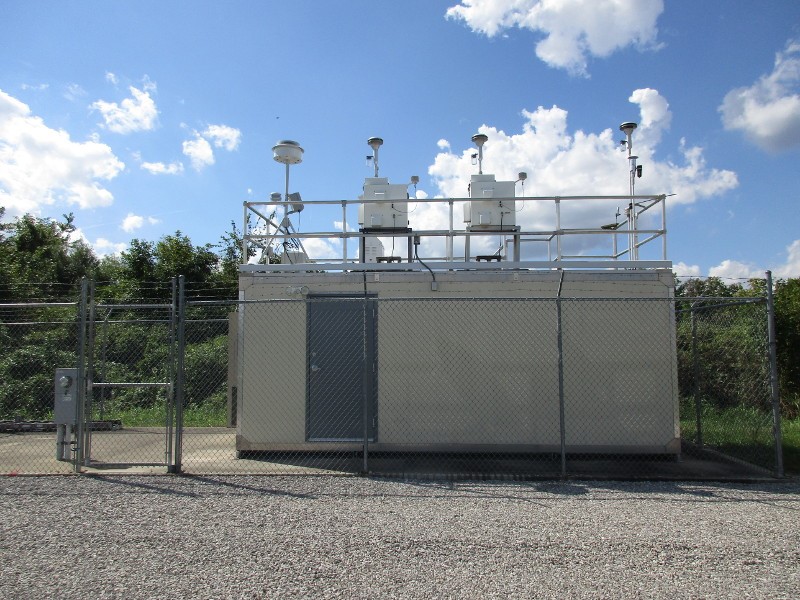
A typical monitoring shelter, which houses continuous monitors and data acquisition equipment inside a temperature-controlled environment. The probes to the right provide ambient air to the inside monitors, while intermittent samplers are in the middle and to the left on the roof.
Continuous monitors
Continuous monitors sample the ambient air 24 hours per day, seven days a week. Continuous data is collected for the criteria pollutants of ground-level ozone, sulfur dioxide, carbon monoxide, nitrogen dioxide, and particulate matter (PM10 and PM2.5), and the noncriteria pollutants of black carbon, ozone precursors, other oxides of nitrogen, ultrafine particulates, and carbon dioxide. Ambient air is drawn into the instruments located inside a temperature- controlled shelter. The instruments’ outputs are collected by the data acquisition system. Daily quality control (QC) on the instruments are performed automatically using on-site calibrators. Calibrations of the units can be performed either remotely or on-site at prescribed intervals.
Many sites also collect meteorological data continuously, as well. The continuous air quality monitoring data transmits electronically from the data acquisition systems (loggers) to IDEM for further processing and analysis. Many uses for the data include developing SmogWatch forecasts, issuing Air Quality Action Day advisories, supplying data to U.S. EPA’s AirNow, and producing the Air Quality Index (AQI).
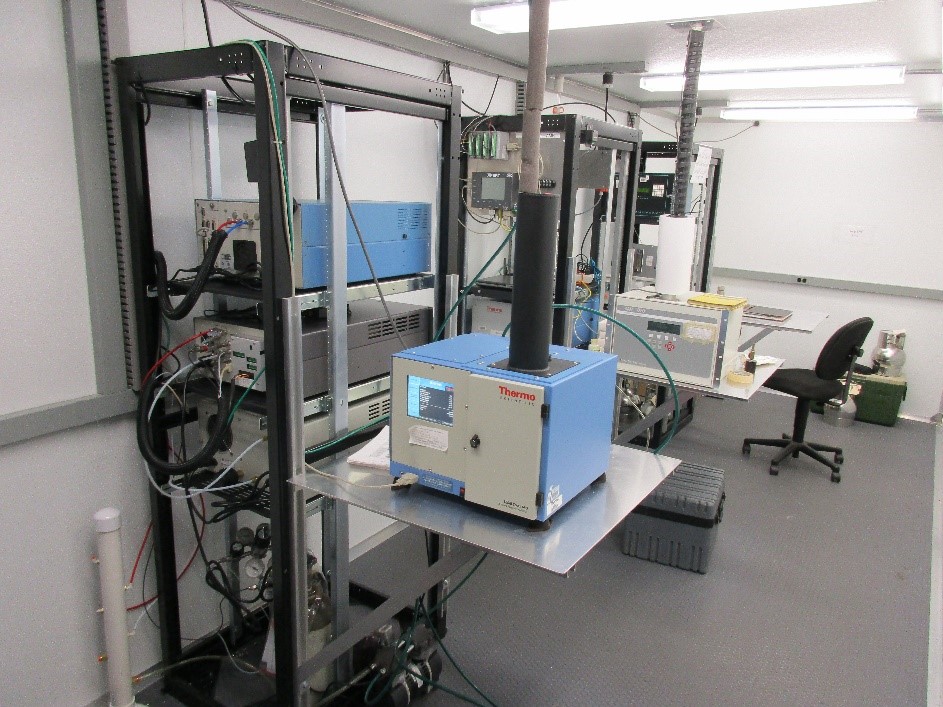
Continuous monitors and data acquisition system.
Noncontinuous, or Manual, Samplers
Noncontinuous (or manual) samplers collect a 24-hour ambient air sample on a predetermined schedule, usually once every three or six days. Particulate matter (PM10 and PM2.5), total suspended particles for metals, and air toxics samples for toxic VOCs and carbonyls are collected using manual methods. (Photochemical assessment monitoring stations (PAMS) using gas chromatograph (GC) for analysis and sampling for benzene, which is a toxic VOC, are continuous.) Samples of air are collected in a canister for air toxics and filters are used to collect particulate matter (PM) samples. An air monitoring specialist sets up and retrieves the canisters and filters from the monitoring site according to the established schedules. The canisters and filters are taken to IDEM’s Air Laboratory or shipped to an outside laboratory for analysis by a qualified technician.
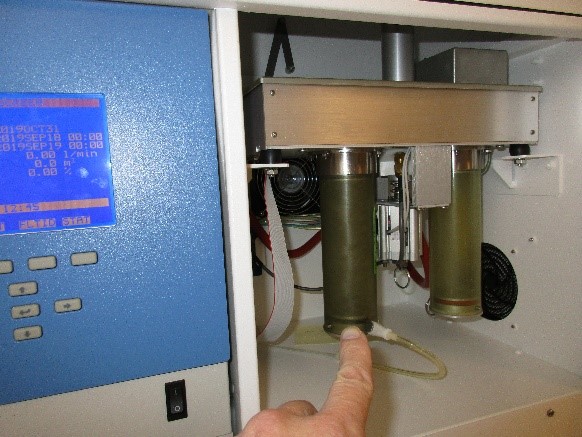
An air monitoring specialist points to the canisters holding filters for a PM2.5 manual sampler.
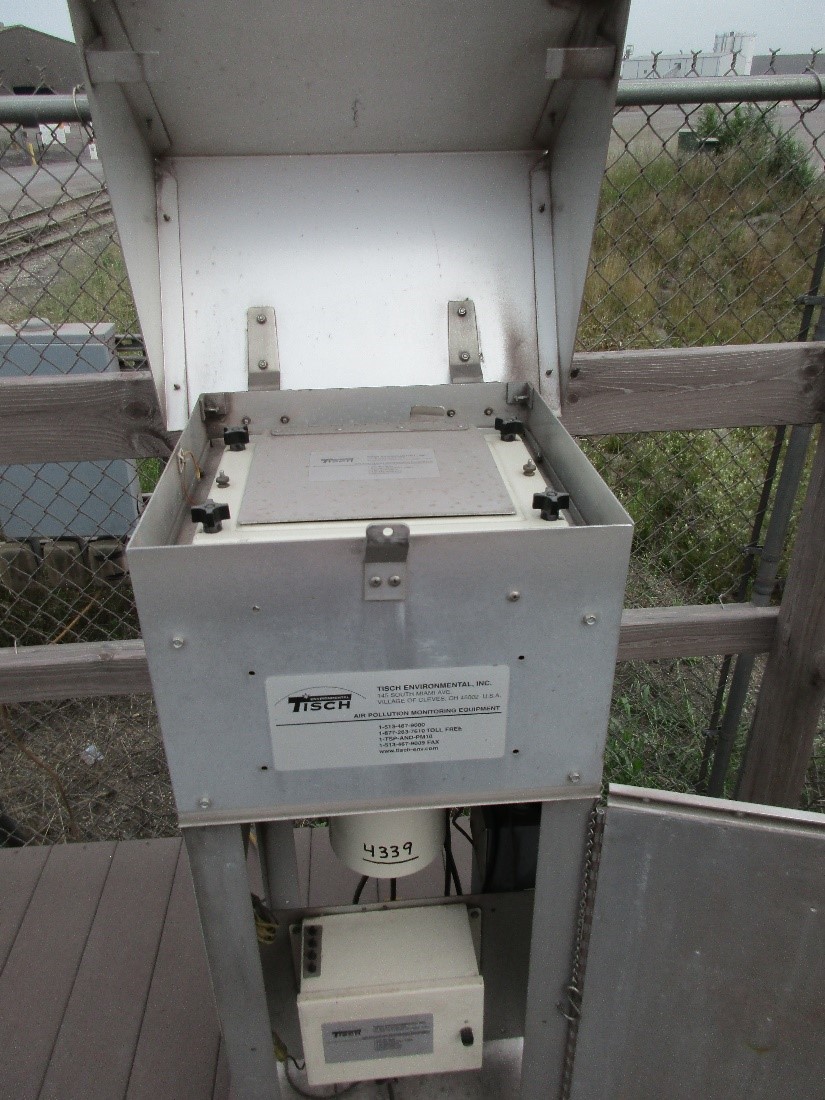
A TSP sampler used to collect filters for metals analysis.
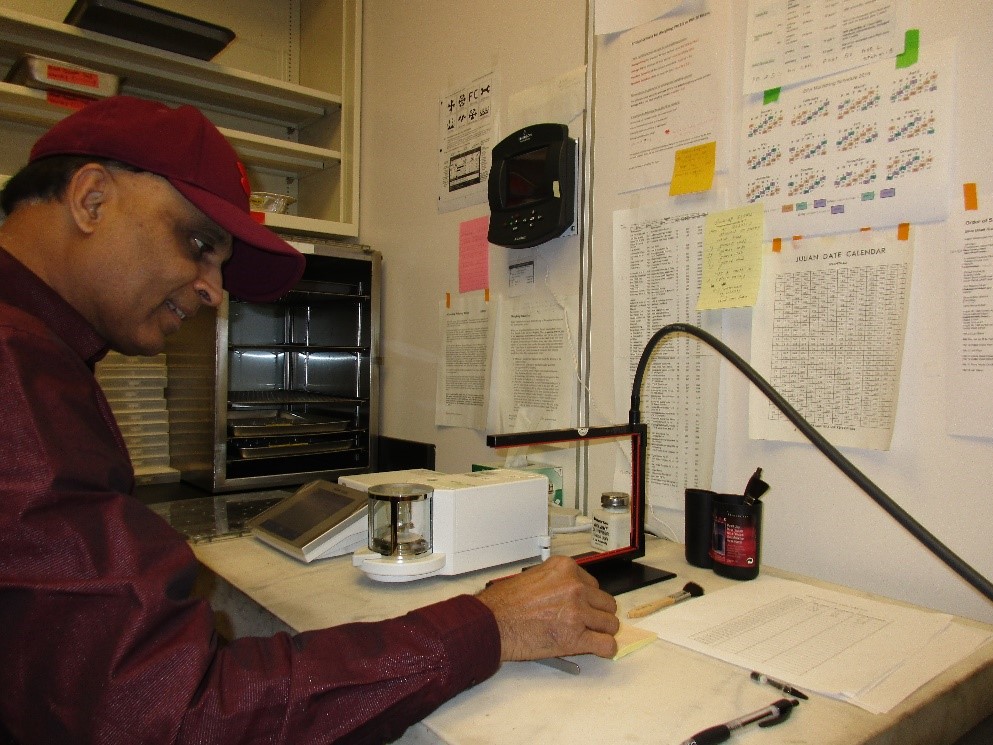
A scientist deionizing a Teflon filter prior to weighing on an electronic micro balance in IDEM’s Air Toxics Laboratory Clean Room. Particulate Matter is measured using a gravimetric analysis where a filter is weighed before and after sampling to determine concentration. .
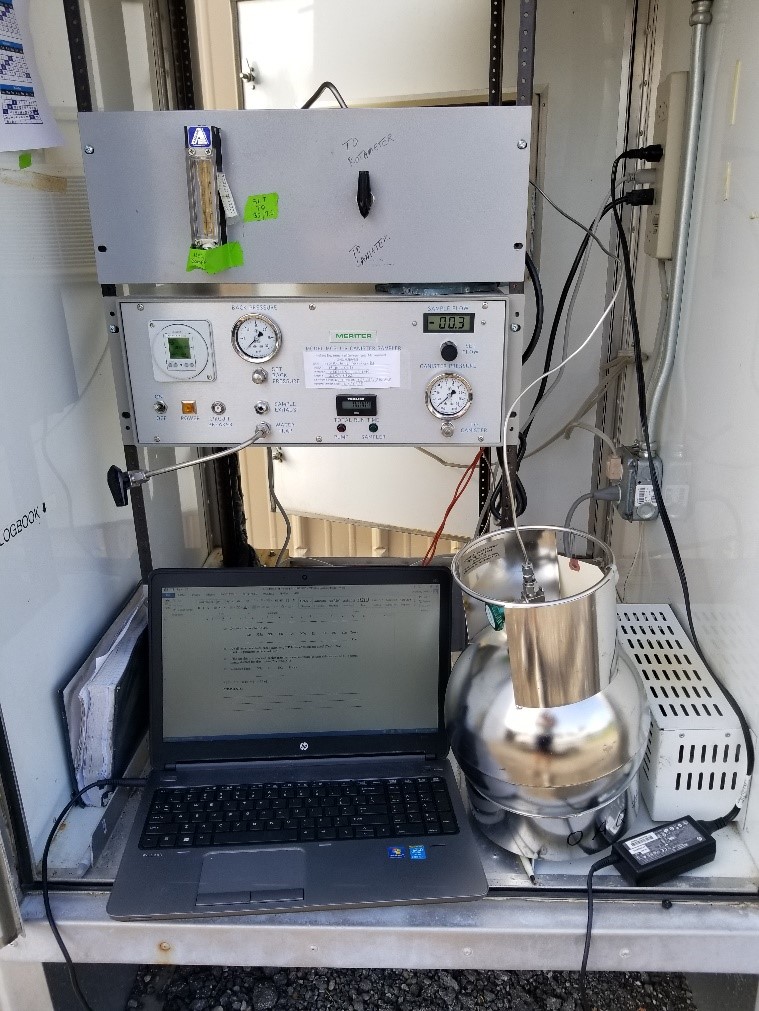
An air toxics sampler.
Additional Information
The annual Indiana Ambient Air Monitoring Network Plan and Quality Assurance Project Plans provide a wealth of information on sampling methods, monitoring instruments, and operational requirements. For more information about air toxics samplers and instrumentation, take a virtual tour of IDEM’s Air Toxics Laboratory.
IDEM’s online Data Management and Display System displays continuous monitoring data, as well as noncontinuous monthly and annual summary reports.
